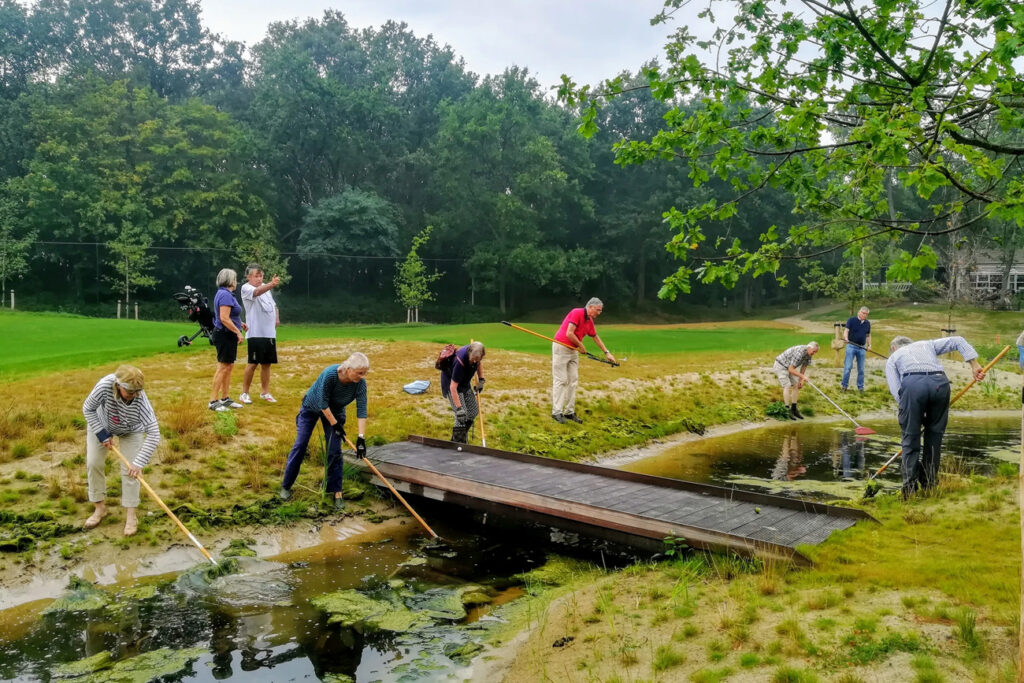Since weekly professional events hit TV screens, golf fans around the world have become accustomed to immaculate course presentation. But these events are at the elite level of the sport and aren’t always a true reflection of what golf course management can or should be considering the wide variety of landscapes, course types, and business models.
Comparing apples with oranges when it comes to course management and presentation can also be unrealistic and unhelpful for those striving to improve biodiversity and conserve resources as part of a more sustainable approach.
Finding the right balance between course presentation and other important considerations around cost-efficiencies and wider responsibilities as custodians of a natural landscape may not always be easy.
In order to work towards achieving this goal, here are some questions often considered:
- What are the golfers’ main concerns/expectations?
- How are these addressed without neglecting other parts of the job?
- How is the fact that it’s a balancing act and there are time/resource constraints communicated?
1. Clear communication
Of the 5.2 million golfers in the UK in 2020, 36% identified as returning or new players, with 16% either starting or trying golf for the first time because of the pandemic. And in the US, the National Golf Foundation found an increase of 500,000 golfers in 2020 – up 2 percent on 2019. This was the largest net increase in 17 years.
Whilst not always the case, increasing the levels of information available to all golfers provides a greater understanding as to why an area of the course might not look as expected.
One good example comes from Golfbaan Het Rijk van Nijmegen in the Netherlands, which has placed three information boards at various points around the course to explain what is happening or what has happened in each area. Jumeirah Golf Estates in the UAE have recently installed a ‘Green Information Wall‘ in their Country Club for residents to learn from.
2. Getting golfers involved
Whether it is course etiquette or which group has priority during maintenance, an ‘us’ and ‘them’ approach concerning golfers and course maintenance staff is sometimes evident, yet this needn’t be the case with effective dialogue and collaboration.
In the United States, The Ritz-Carlton Golf Club in Orlando provides numerous hands-on opportunities – including an active caddie programme – for guests and visitors to learn and experience the natural amenities of the golf facility.
The West Lancashire Golf Club, England, has created an environmental pamphlet with the help of the BIGGA Ecology Team. All golfers can take a look at what sustainable measures the club is undertaking, and can see for themselves thanks to organized evening walks which highlight the value of their environmental and ecological initiatives.
Involved on an even greater scale are golfers at Golf Thunersee, Switzerland, and Stichting Golf Duinzicht, the Netherlands, who have been getting their hands dirty by assisting greenkeepers with course maintenance.
Golf courses can also embrace technology like the example set by Golfclub Landgoed Nieuwkerk in the Netherlands. The Shanks, the club’s well-named paper magazine, has now gone online and includes wide-ranging information, including videos, while its website has also had a complete makeover.
Could yours be updated to help showcase what’s really happening on the course?
Ragnies Golf Club, Wallonia, Belgium

3. The power of priorities
There are only a limited number of hours in the day, and with golf course conditioning often focusing on the closely-mown areas of play, is it possible to free up more time for those sections by letting other areas look after themselves?
Ragnies Golf Club in Wallonia, Belgium has adopted this approach by covering its wasteland areas (totalling 4.3 hectares) with a mix consisting of forest ryegrass and red clover with other varieties like wheat, oat and barley. This chemical-free process keeps areas mostly clean from undesirable weeds while also providing aesthetically-pleasing cover for animals and replacing nitrogen in the soil.
The benefits of leaving some areas untamed are not solely ecological, however, as demonstrated by Golf At Goodwood in England. By leaving grass next to a woodland untouched, over 20 tree shoots – including beech, hawthorn and lime – have come through, negating the need to buy any trees to increase the wooded area. A real win/win situation!

